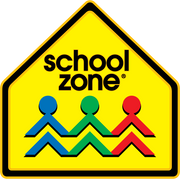Former NFL player and long-time TV sportscaster Pat Summerall once mused, “If only faces could talk.” Actually, faces do say a lot. How many times have we heard someone say, “One look at his face said it all”? Kids on the autism spectrum tend to struggle reading facial expressions, but this important skill, along with recognizing feelings in general, can vary widely in other kids too.
Why non-verbal communication is so important
Almost everyone has experienced seeing a look on someone’s face that “tells” them words or actions were taken differently than intended. A big percentage of communication is non-verbal, and inability to read these cues can mean much gets “lost in translation.”
The U.K.-based website The Conversation notes that “Being able to read someone’s facial expression is crucial for good interpersonal relations.” It continues, “If, for instance, you cannot read someone’s sad expression, you may not provide reassurance, words of comfort or a hug. And if you can’t tell that someone is angry with you from their expression, you may not apologise for your actions.” All these miscues can lead to “greater social difficulty.”
But reading non-verbal inputs is harder for some than others. Adele Devine, a UK special needs teacher and author of Colour Coding for Learners with Autism: A Resource Book for Creating Meaning through Color at Home and School, has said that kids with autism “are a bundle of contradictions” including that “They feel emotion intensely, but often seem to struggle to read facial expressions."
This observation applies to a large and growing percentage of the population. In December the Centers for Disease Control reported that estimates from its Autism and Developmental Disabilities Monitoring (ADDM) Network, suggest “about 1 in 44 children has been identified with autism spectrum disorder (ASD).”
Developing “reading” skills takes practice
We know that kids—all kids—need guidance in learning to read words, but we can also help them learn to read faces and feelings! One suggestion in “Ideas for Teaching Children About Emotions” from the Center for Early Childhood Mental Health Consultation is to make different emotion faces and have children name them. Let it become a game. After all, what child would not want to see mom or dad “making faces”?!
Also, Anywhere Teacher, School Zone’s online learning program with 3,000+ activities for ages 2-8, includes several specifically geared toward recognizing and understanding feelings and facial expressions. One video called “Introducing Basic Emotions,” shows kids illustrations of basic emotions, paired with the word for each emotion.

Another is “What’s That Feeling?” which alternates matching a facial expression shown with the feeling word shown to choosing an expression from several options to “put on” a blank face to make it match the feeling word.

Fluency in “speaking” feelings also takes practice
Of course, recognizing and responding appropriately to feelings involves more than just reading facial expressions and affects so many areas of growth and development. A post to Verywell Family by Amy Morin in 2020, titled, “How to Teach Kids About Their Feelings,” said, “Kids who understand their emotions are less likely to act out by using temper tantrums, aggression, and defiance to express themselves. A child who can say, ‘I’m mad at you,’ is less likely to hit. And a child who can say, ‘That hurts my feelings,’ is better equipped to resolve conflict peacefully.”
The ability to recognize the feelings of self and others and manage one’s own emotions in healthy ways is now part of “socio-emotional learning” (SEL) standards in the school curriculum of many states.
Penn State Extension Services (PSES) notes that “When children are more socially and emotionally aware and skilled, they can more effectively navigate relationships, calm down and problem solve when challenges arise.”
How do kids learn to speak words? They listen, mimic, and then are urged to use their words. Similarly, taking the lead with conversation starters can help kids build social-emotional skills.
PES suggest that “when a child has a concern or problem, ask questions or make comments like, ‘How are you feeling? Or ‘It looks like you might be feeling sad about something.’” Does a child seem frustrated by a project not working out? Acknowledge it! "You seem frustrated. Can you tell me about it?"
A similar example would be if you see sibling rivalry in progress. Use it as a teachable moment. Ask "When your sister wouldn’t share her toy, how did that make you feel? Did you tell her that?"
PES recommends discussing your own feelings in appropriate ways such as “I’m feeling happy [or sad] today because ______.”
And they, along with many other resources, say that story time is a great opportunity for helping kids think and talk about other people’s feelings. “How do you think that thing that happened in the story made this character feel? What did he do? What would you do?”
Several early reading storybooks from School Zone’s Start to Read! series are ideal for that. Benny’s Baby Brother, available as an iOS eBook or Kindle eBook is about a big brother who changes his mind about the newest addition to the family. Get Lost, Becka! presents an easy-to-relate-to story of sibling conflict, and I Don’t Like Peas will resonate with any child who has turned up their nose at something on a plate that’s “good for them.” Both are also available in iOS and Kindle as well as print.

Like ABCs and multiplication tables, all kids’ ability to “read” faces and “speak” feelings can improve with practice, and like those basic academic building blocks, it’s super important!











